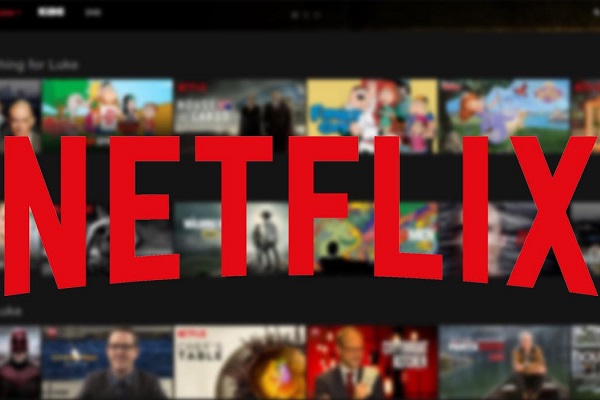A study released by films from Netflix were more likely to have women directing (23.1%), writing (25.2%) or producing (29%) them than the top-grossing movies of 2018 and 2019.
Netflix has released a study it commissioned from top academic researchers that shows the streaming giant is outpacing much of the film industry in the inclusivity of its original films and television series.
Netflix is trying a different route with both more transparency and company control. The streamer commissioned the USC Annenberg Inclusion Initiative to analyse its 2018 and 2019 original, live-action films and series, and presented the results to members of the press. The results were, as Annenberg Inclusion Initiative founder and director Stacy L. Smith noted, far more positive than most Annenberg reports, which have typically found only slow, sporadic improvement in the most popular films.
Netflix said that across 22 inclusion indicators for film and series, 19 showed an improvement year-over-year.
“We are outpacing the industry in hiring women and women of colour to direct our films, and women creators to bring our series to life, and we have achieved gender equality in leading roles across our films and series. We have also exceeded proportional representation of Black leads, co-leads and main cast across the two years that were examined. But not all racial/ethnic groups saw their representation increase during the period of the study. For example, we still have notable representation gaps in film and series for Latinx, Middle Eastern/North African, American Indian/Alaskan Native, and Native Hawaiian/Pacific Islander communities. And we still have work to do in increasing the representation of the LGBTQ community and characters with disabilities,” a statement from Netflix said.
Netflix achieved roughly gender parity among lead characters in both film (48.4% of leads were female) and TV (54.5%) in 2018 and 2019. The study covers a total of 126 movies and 180 series. It does not include documentary or unscripted series or films, animation, international productions or content hosted on Netflix that it did not itself produce.
Netflix films were more likely to have women directing (23.1%), writing (25.2%) or producing (29%) than the top-grossing movies of 2018 and 2019. The correlation isn’t a perfect one since Netflix releases both large and small budget films whereas the majority of top movies at the box office come from higher-priced productions.
In Netflix films and series, 31.9% of leads were from underrepresented racial and ethnic groups. That trails demographics (about 40% of the U.S. population according to census data) but Netflix showed marked improvement between 2018 (26.4%) and 2019 (37.3%).
Scott Stuber, vice president of global film, said: Ma Rainey’s Black Bottom, Da 5 Bloods and Old Guard show Netflix is still progressing. But the whole auspice here is not to pat ourselves on the back. It’s to say publicly here’s what we’re trying to accomplish and we’re going to be held accountable.
The study will continue for the next six years. It’s a level of transparency that traditional studios, and other streaming companies, haven’t before embraced. In a blog, Netflix chief executive Ted Sarandos said he hoped the move would spur wider change.
“By better understanding how we are doing, we hope to stimulate change not just at Netflix but across our industry more broadly,” wrote Sarandos.
Last month, Netflix released its first inclusion report, showing that 47% of its global workforce is female and 46% of its US employees are from underrepresented racial or ethnic groups.
Not all of the findings were positive. Speaking characters in Netflix movies were disproportionately male (about 64%). Only 16.9% of film directors were from underrepresented racial or ethnic groups, and the figures on film producers and screenwriters weren’t any better. Among series creators, only 12.2% were from an underrepresented racial or ethnic group. Latino representational lagged especially, accounting for just 4% of film leads and 1.7% of series leads. LGBTQ leads were featured in only 2.3% of Netflix films and series, though 12% of the US population identifies as LGBTQ.
Stuber and Bela Bajaria, vice president of global series, said the results show Netflix where it needs work. But citing that Netflix improved from 2018 to 2019 in nearly all metrics, Smith praised the company for making inclusivity central in its operations.
“If we are making a show that another studio is producing and we’re doing it from the beginning, from episode one, we have all of the discussions,” said Bajaria. “How many people of colour are directing? How many women are directing? Who’s in the writers’ room? We have those conversations all the time.”
Bajaria said Netflix has benefited from not having just a few token non-white series but a pipeline full of diversity. More at-bats for minority creators, she said. She cited shows like the Shonda Rhimes-produced Bridgerton and the Spanish language La Casa de Papel (Money Heist) as examples of how Netflix is remaking what’s traditionally been a success.
“We have big hit shows that don’t look like what you’d expect or maybe what the system has always told you,” said Bajaria. “I do feel like for us, it’s having way more stories than the one failure.”
Netflix also said it will create a fund of $100m to bring more underrepresented groups into film and television. The Netflix Fund for Creative Equity will be distributed within initiatives at Netflix and in organizations outside the company over the next five years.


















































































